Abstract
The study sought to examine the effects of varying interval length on the representation of data obtained using modified frequency time sampling. A 7-category scale was used to observe reliably the behavior of eight psychiatric inpatients. Using electronic real time recording equipment, it was possible to computer analyze the obtained data at varying interval lengths, the shortest interval being 1.0 seconds. It was found that increasing the interval length had little effect on the percentage of total duration recorded within each behavioral category, suggesting that this is a relatively stable measure of behavior. Percentage total events for each category was less stable with increasing interval lengths. The number of recorded events within each category tended to decrease, while their average durations tended to increase, as a function of increasing the interval length. The data suggest that the current practice of determining interval length in an arbitrary fashion, or on the basis of convention, should be abandoned. Rather, such a decision should be empirically determined for each particular observation scale and subject group. One method by which this might be achieved is presented.
Full text
PDF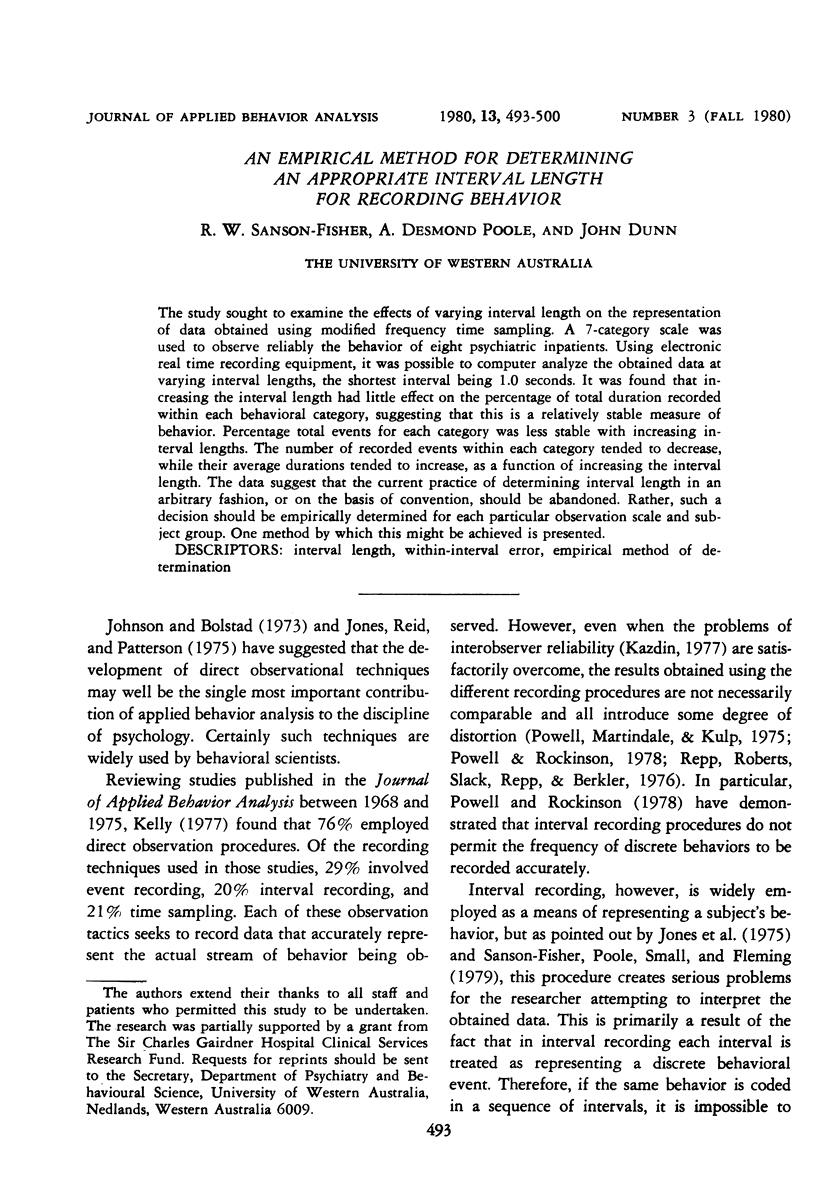
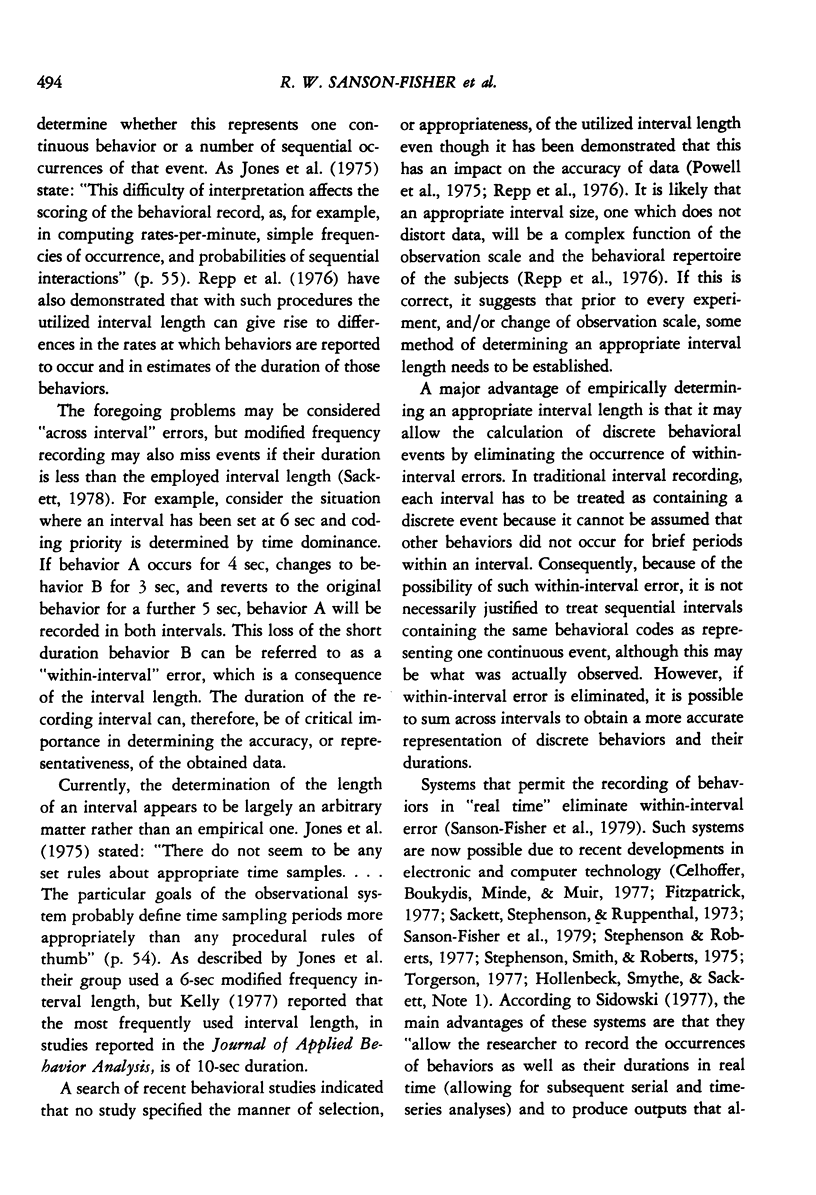

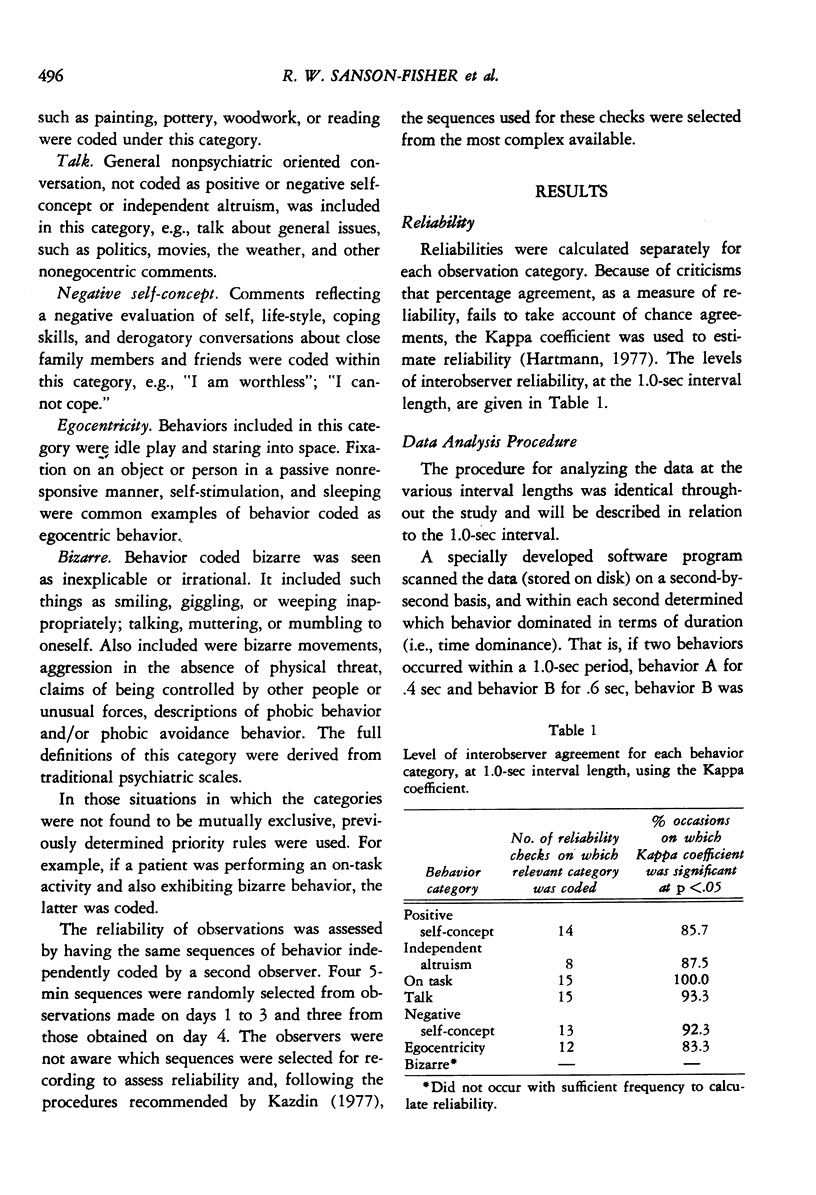
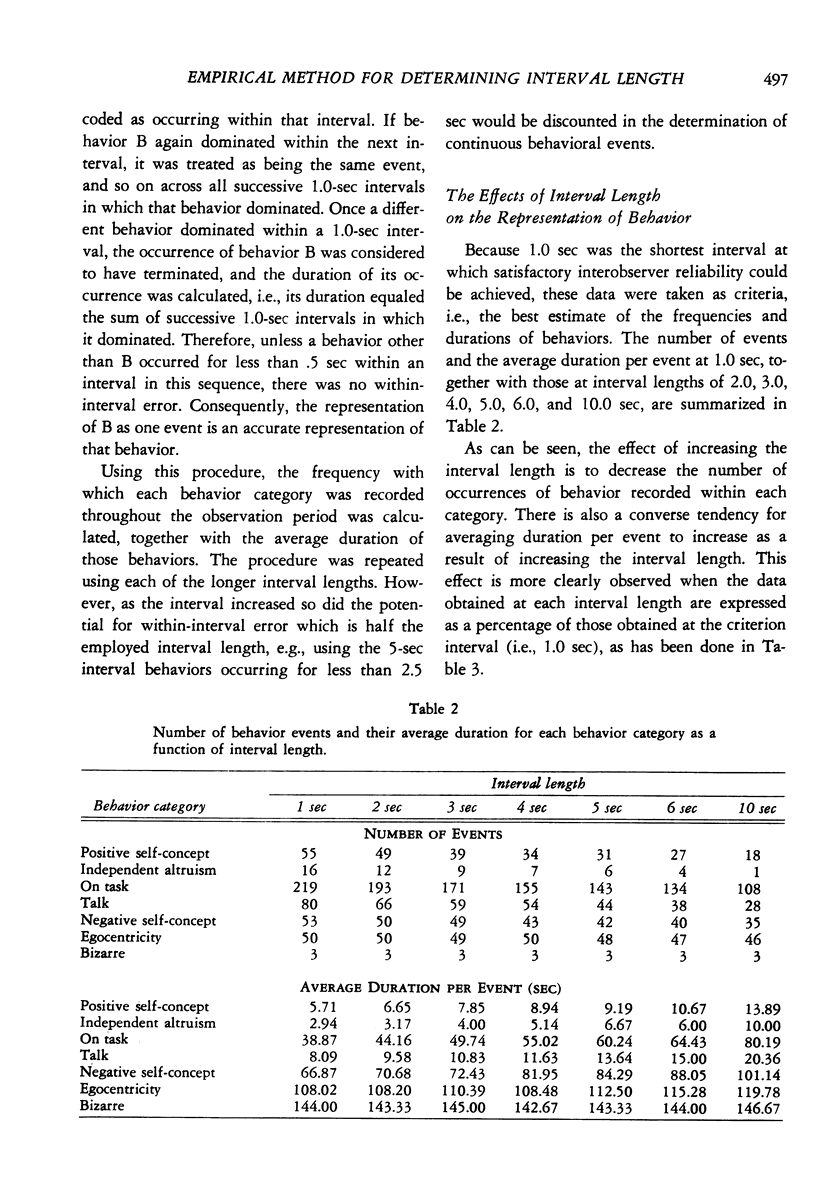

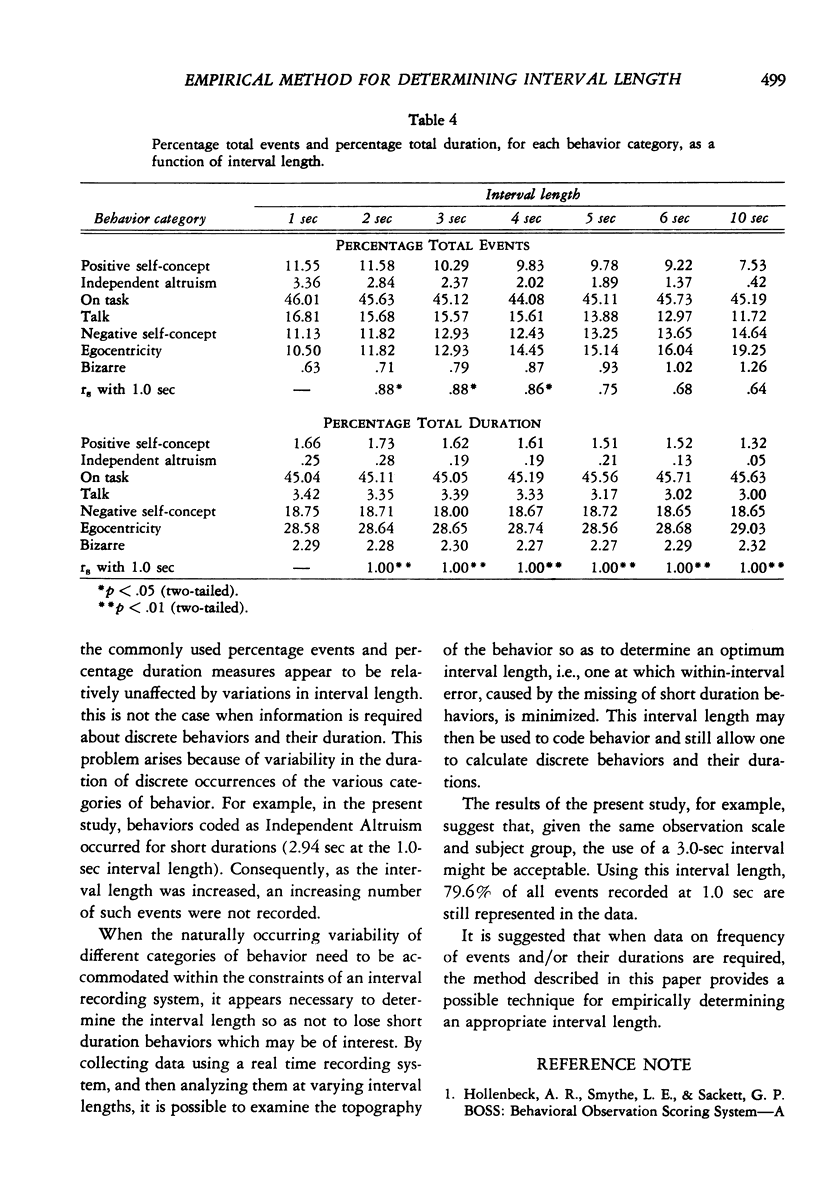
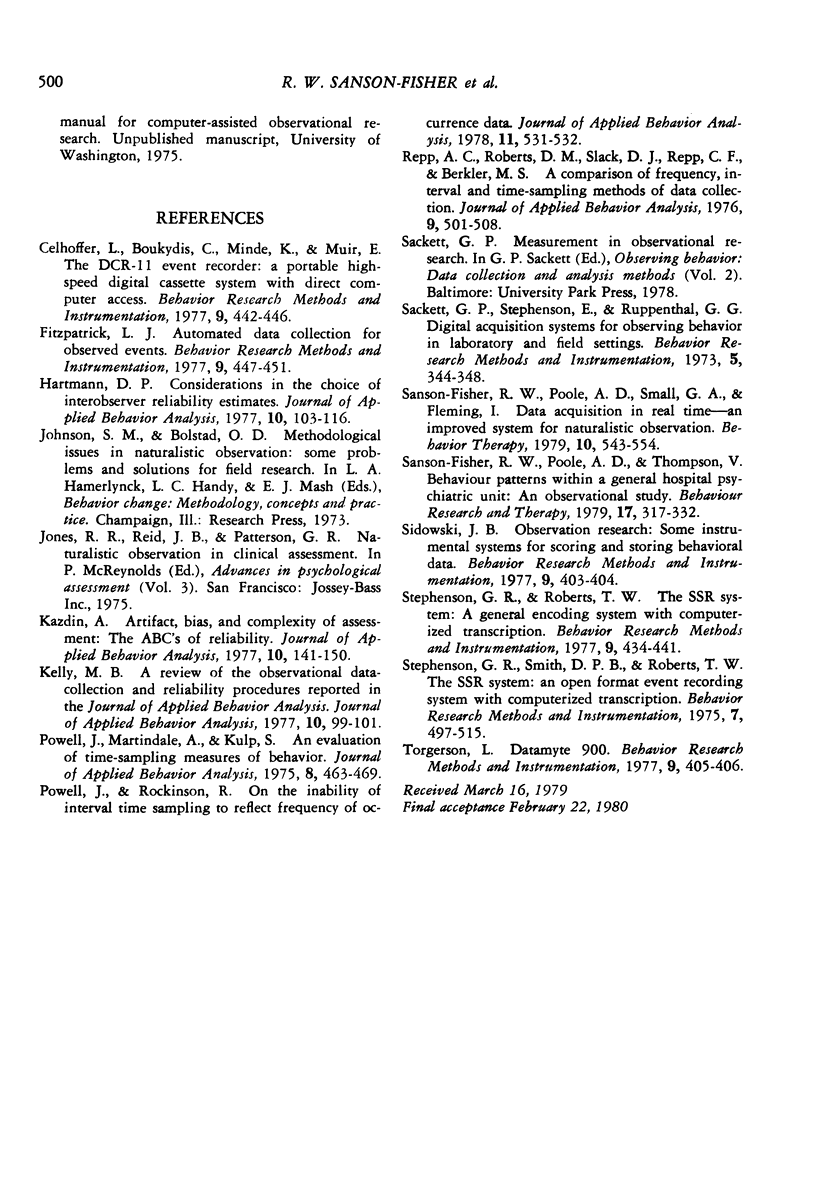
Selected References
These references are in PubMed. This may not be the complete list of references from this article.
- Hartmann D. P. Considerations in the choice of interobserver reliability estimates. J Appl Behav Anal. 1977 Spring;10(1):103–116. doi: 10.1901/jaba.1977.10-103. [DOI] [PMC free article] [PubMed] [Google Scholar]
- Kazdin A. E. Artifact, bias, and complexity of assessment: the ABCs of reliability. J Appl Behav Anal. 1977 Spring;10(1):141–150. doi: 10.1901/jaba.1977.10-141. [DOI] [PMC free article] [PubMed] [Google Scholar]
- Powell J., Martindale A., Kulp S. An evaluation of time-sample measures of behavior. J Appl Behav Anal. 1975 Winter;8(4):463–469. doi: 10.1901/jaba.1975.8-463. [DOI] [PMC free article] [PubMed] [Google Scholar]
- Repp A. C., Roberts D. M., Slack D. J., Repp C. F., Berkler M. S. A comparison of frequency, interval, and time-sampling methods of data collection. J Appl Behav Anal. 1976 WINTER;9(4):501–508. doi: 10.1901/jaba.1976.9-501. [DOI] [PMC free article] [PubMed] [Google Scholar]
- Sanson-Fisher R. W., Poole A. D., Thompson V. Behaviour patterns within a general hospital psychiatric unit: an observational study. Behav Res Ther. 1979;17(4):317–332. doi: 10.1016/0005-7967(79)90004-4. [DOI] [PubMed] [Google Scholar]


